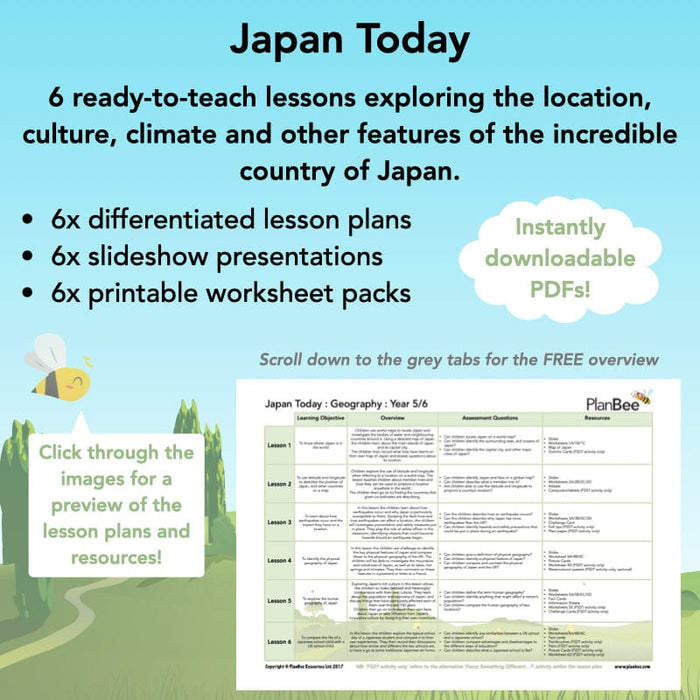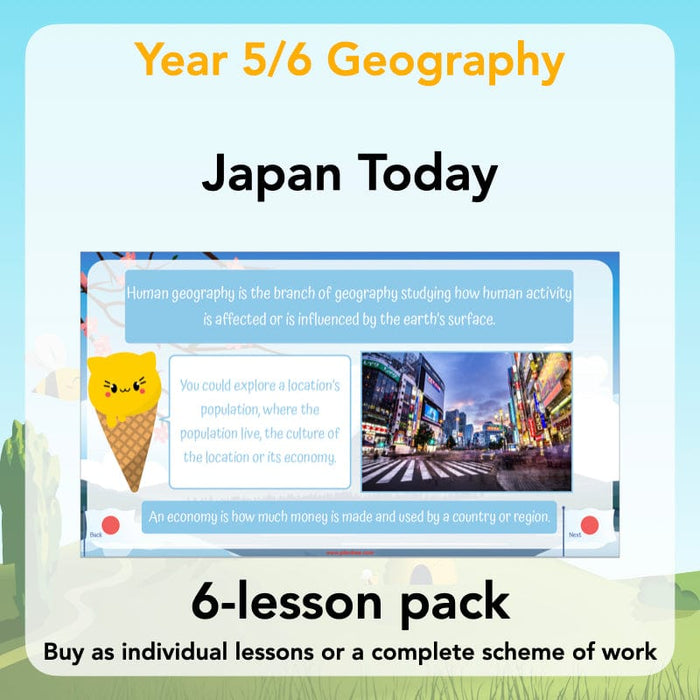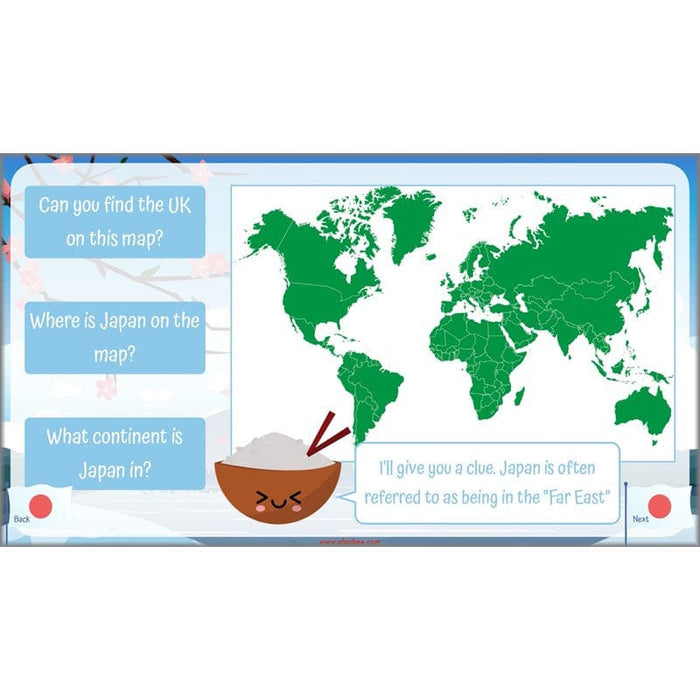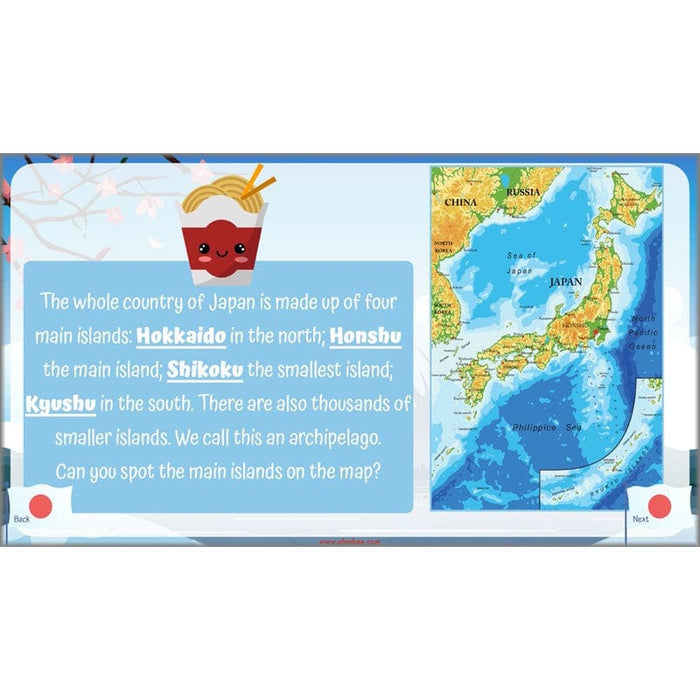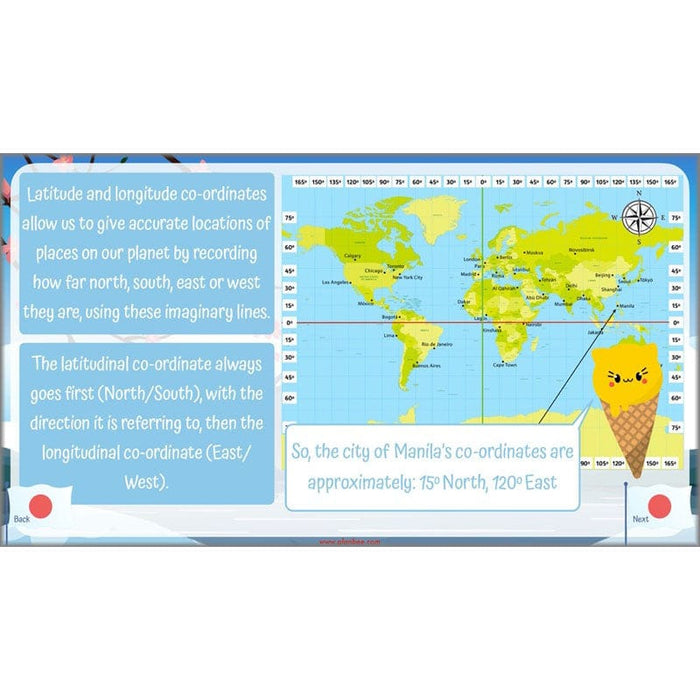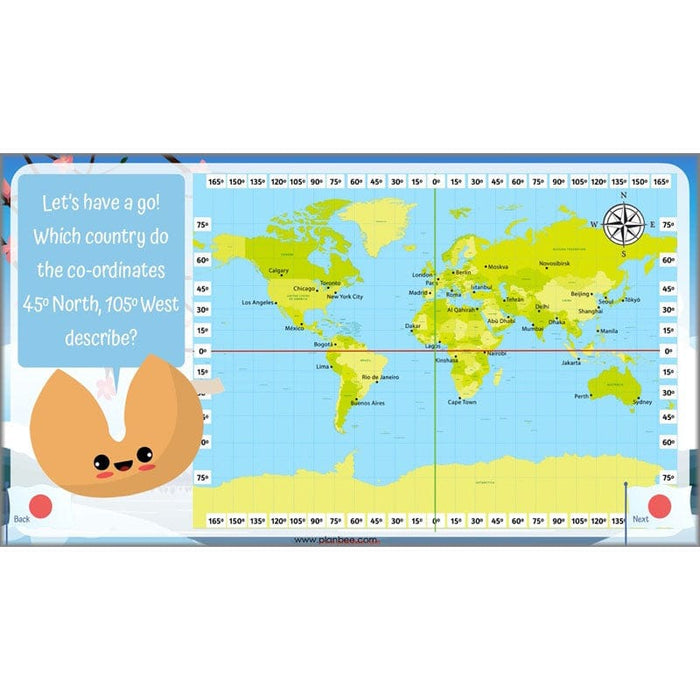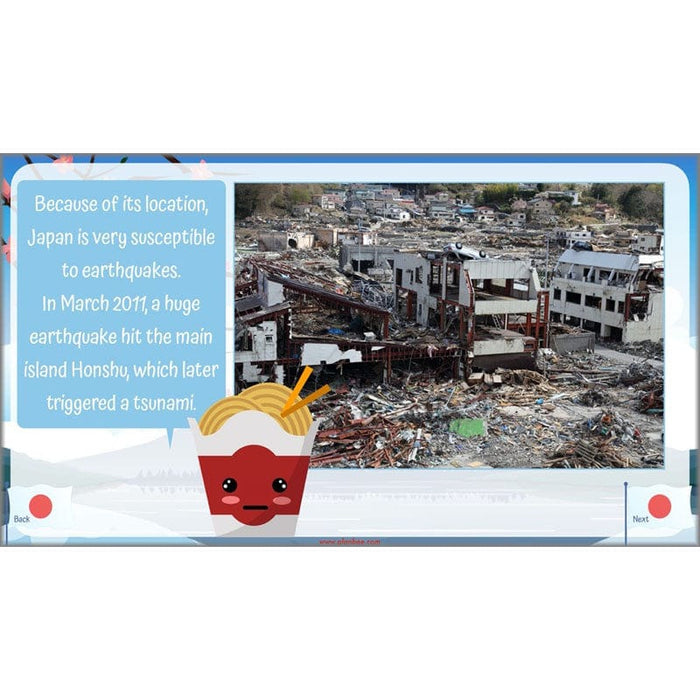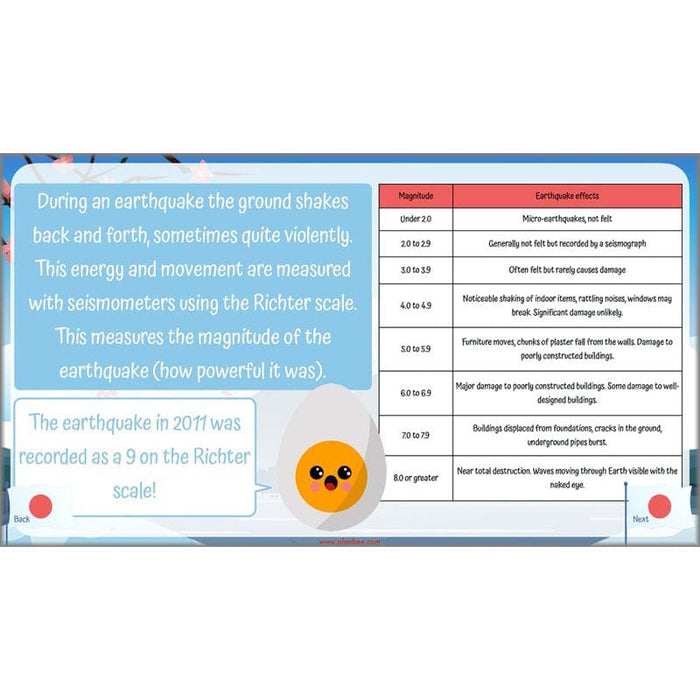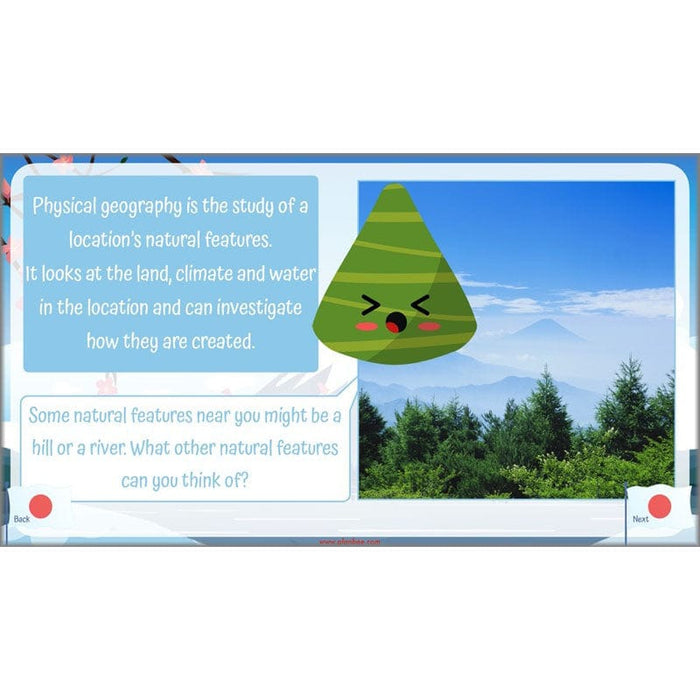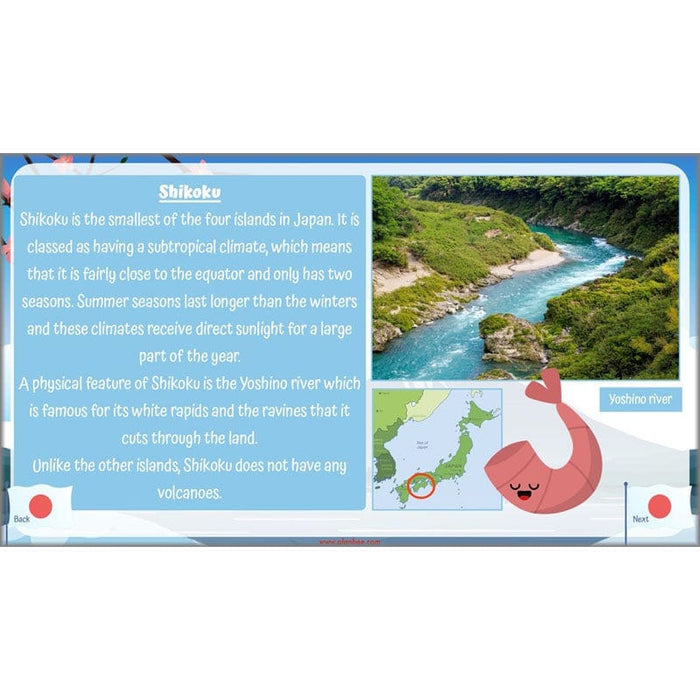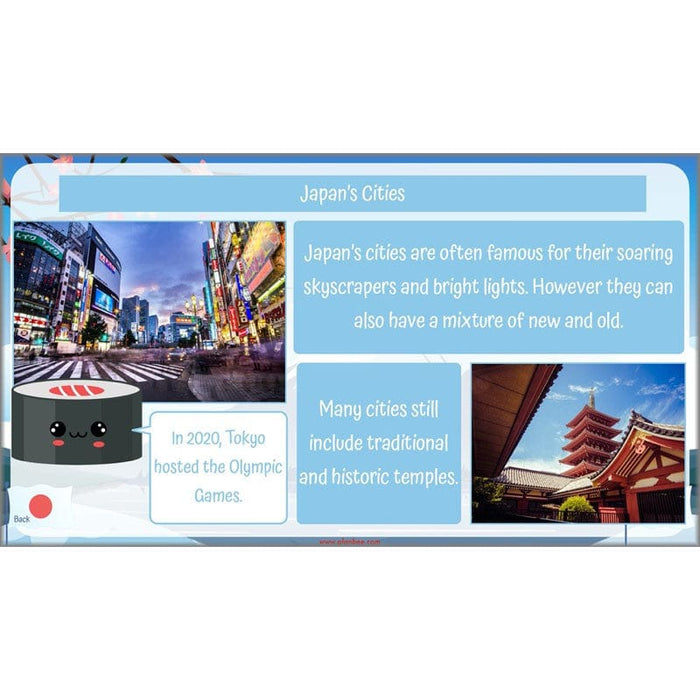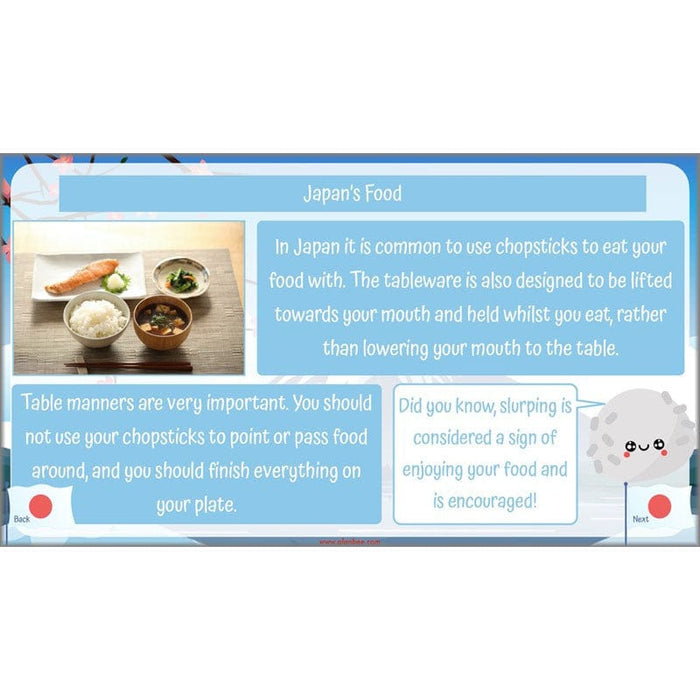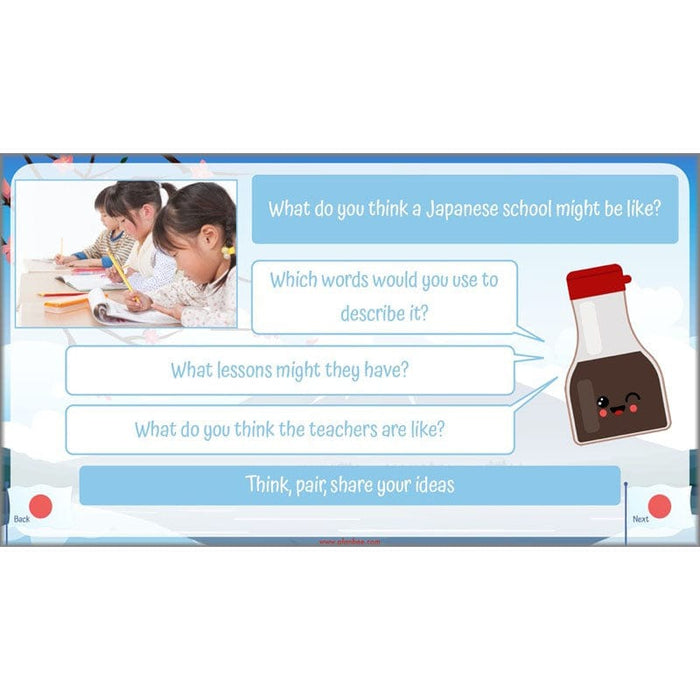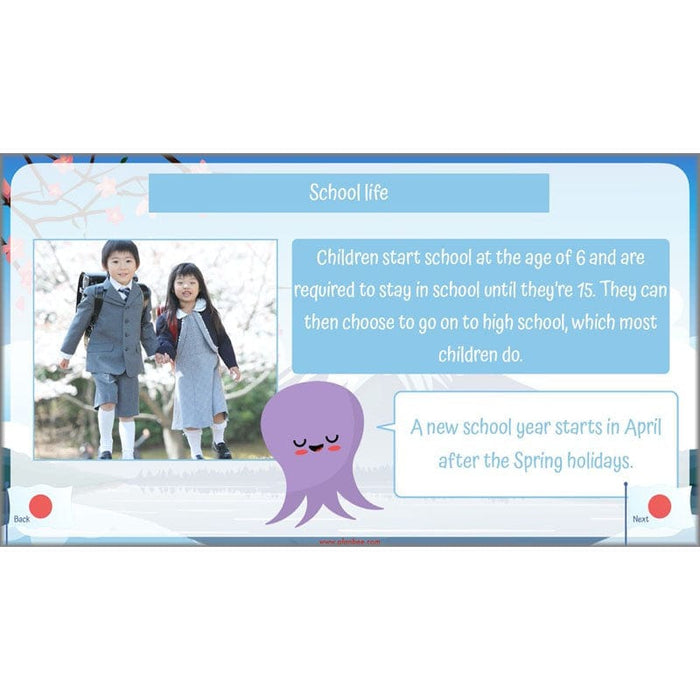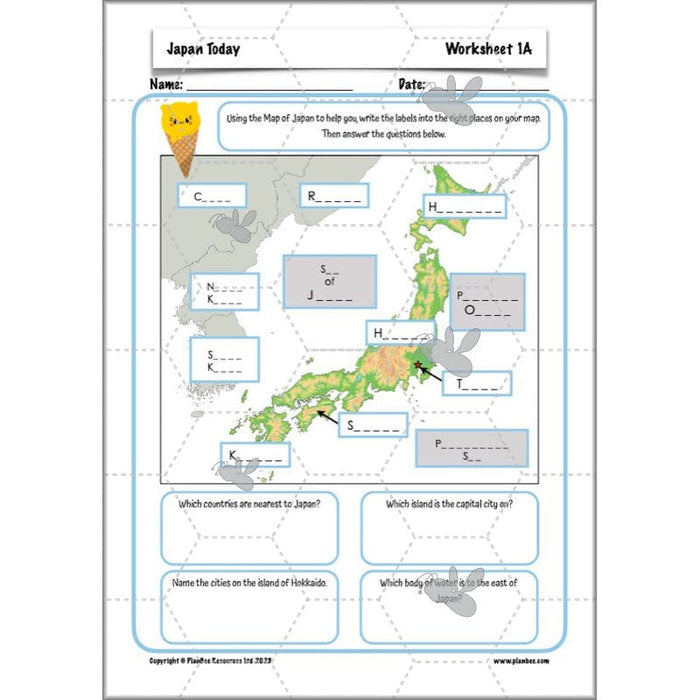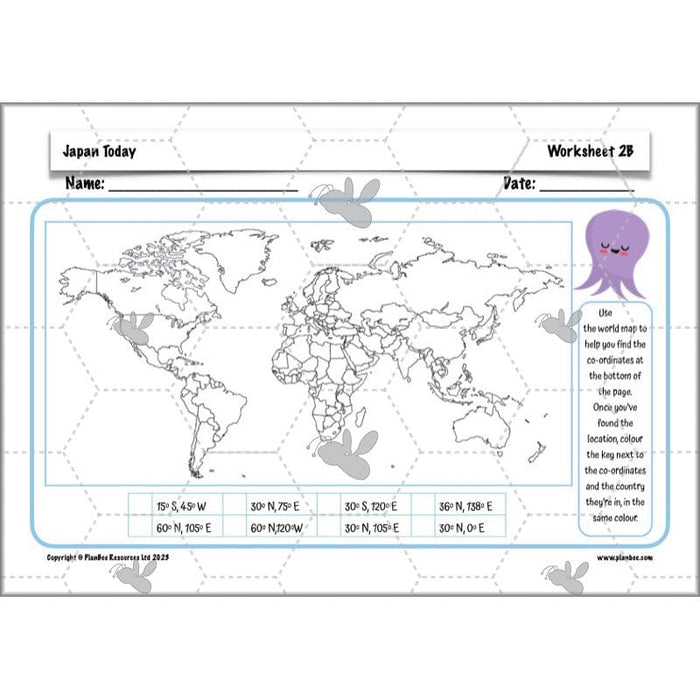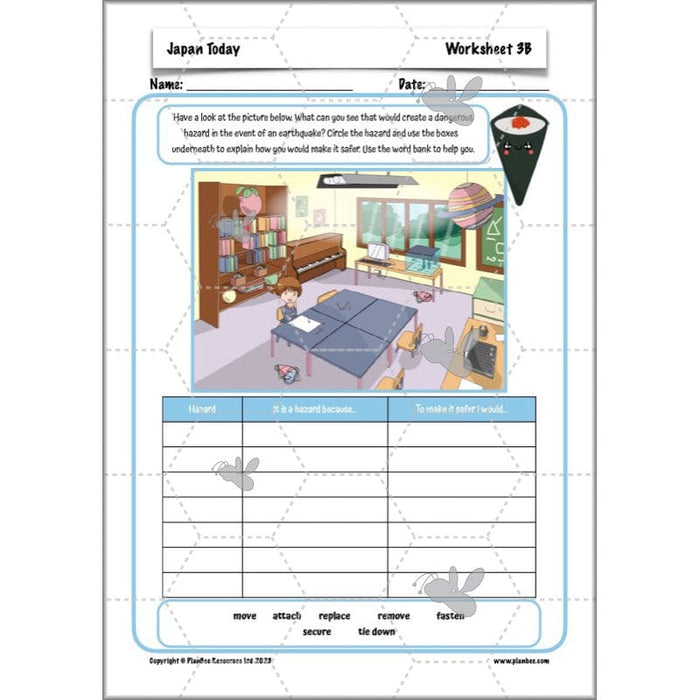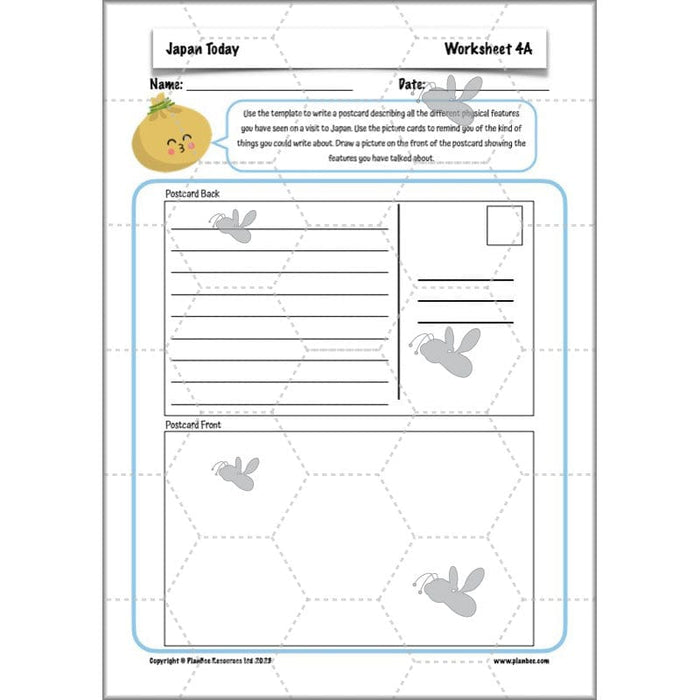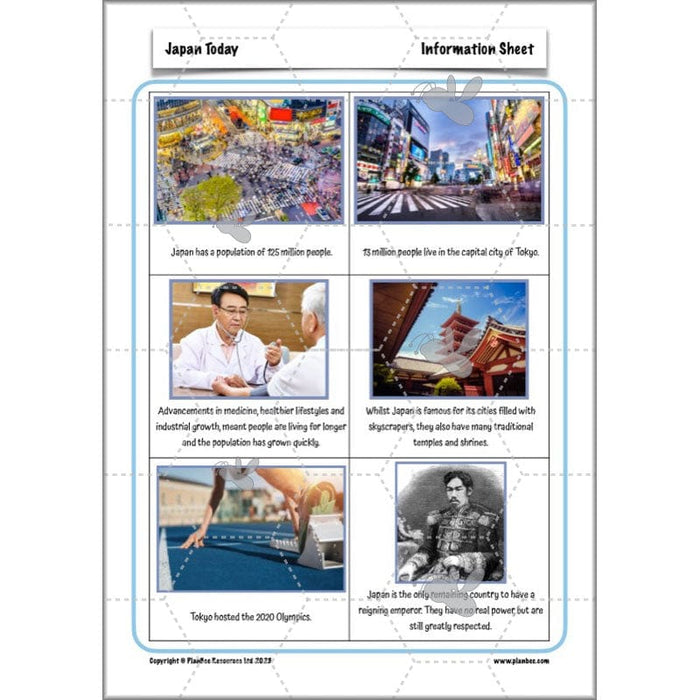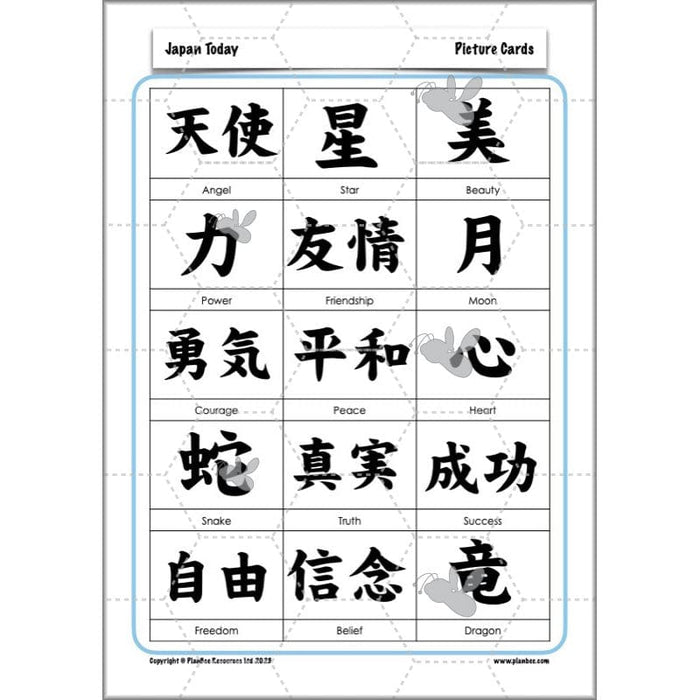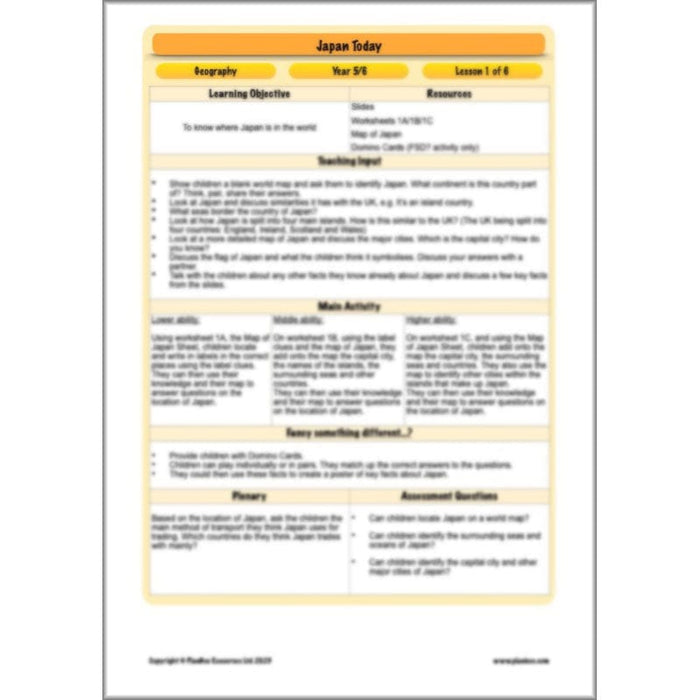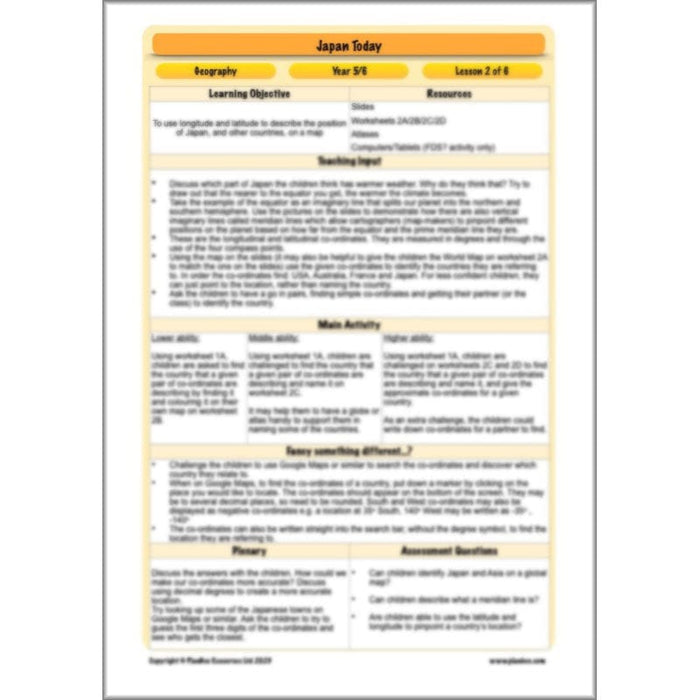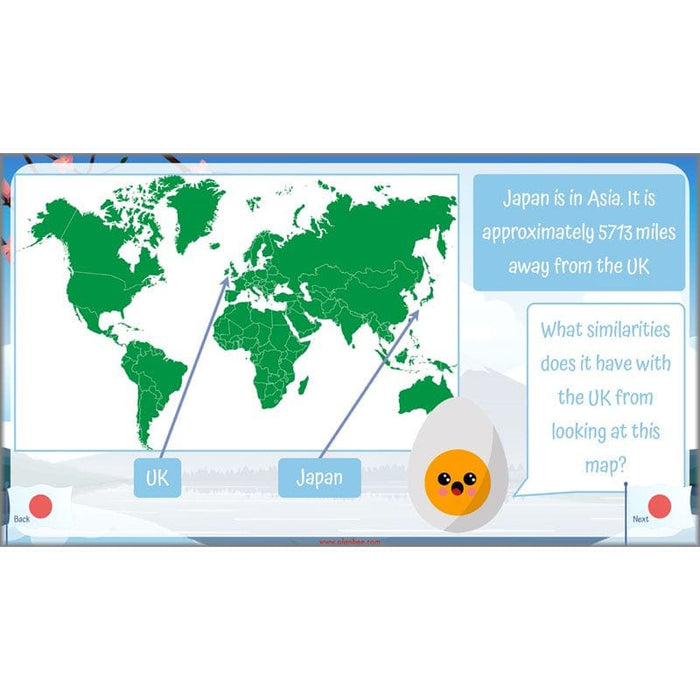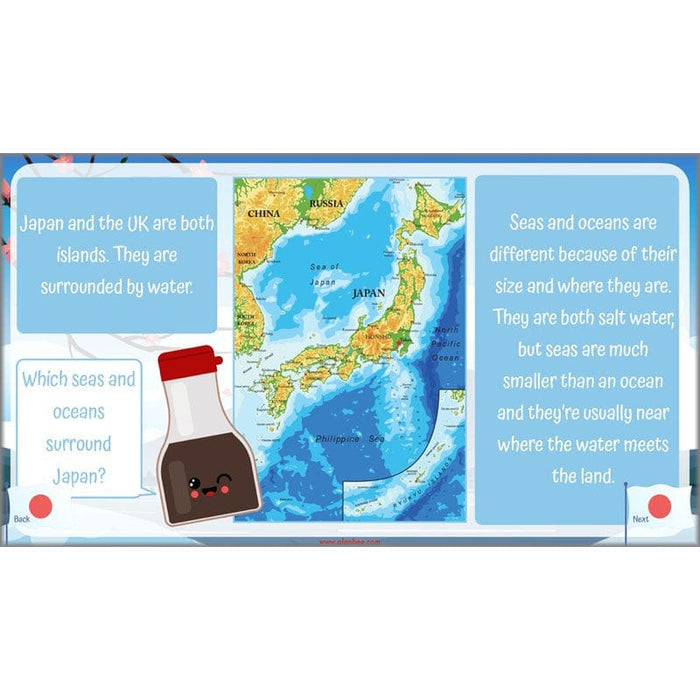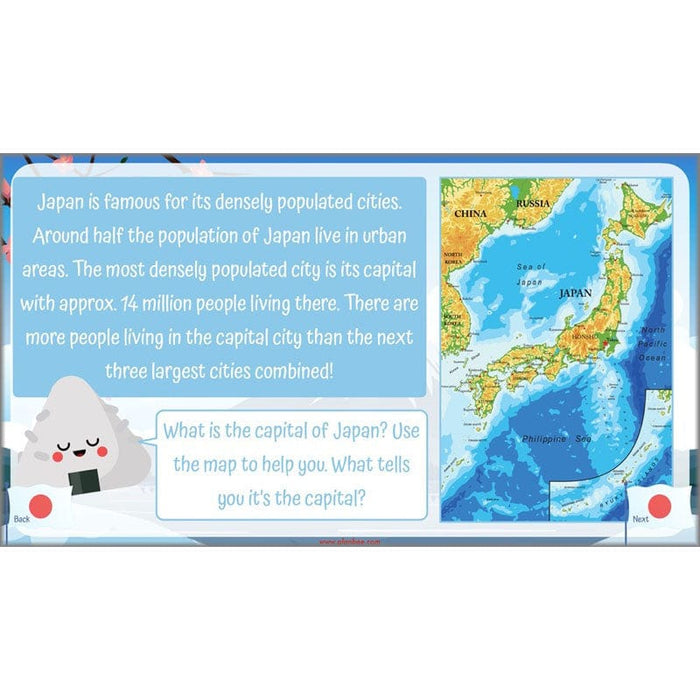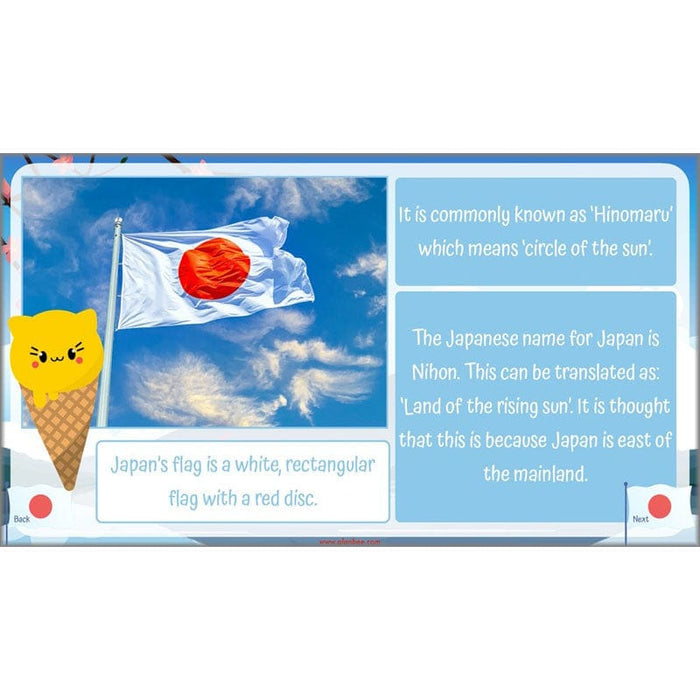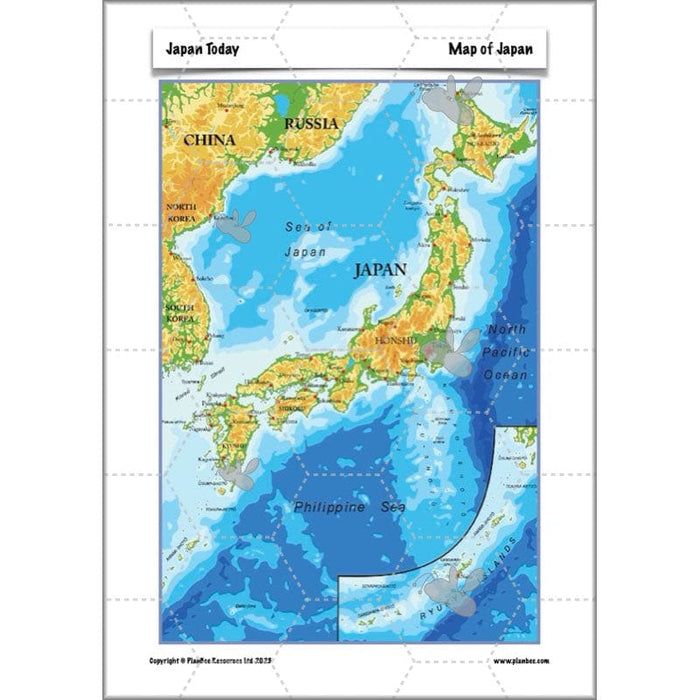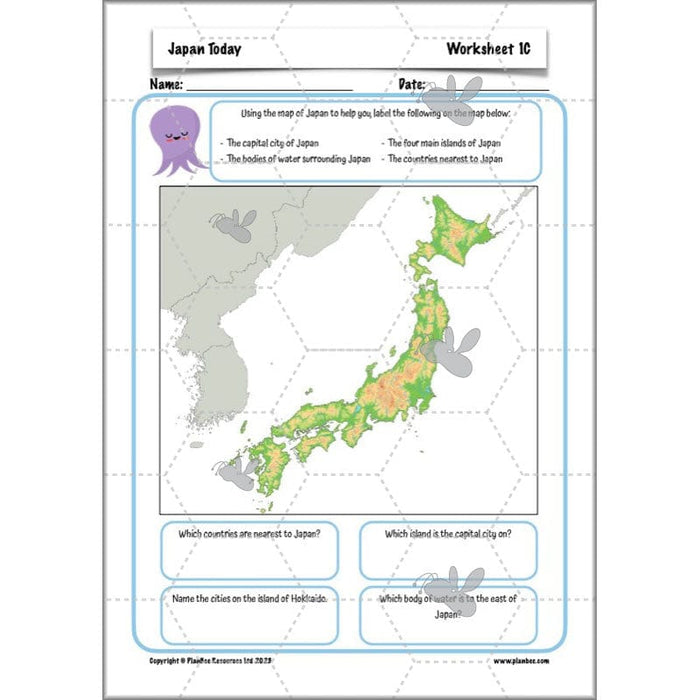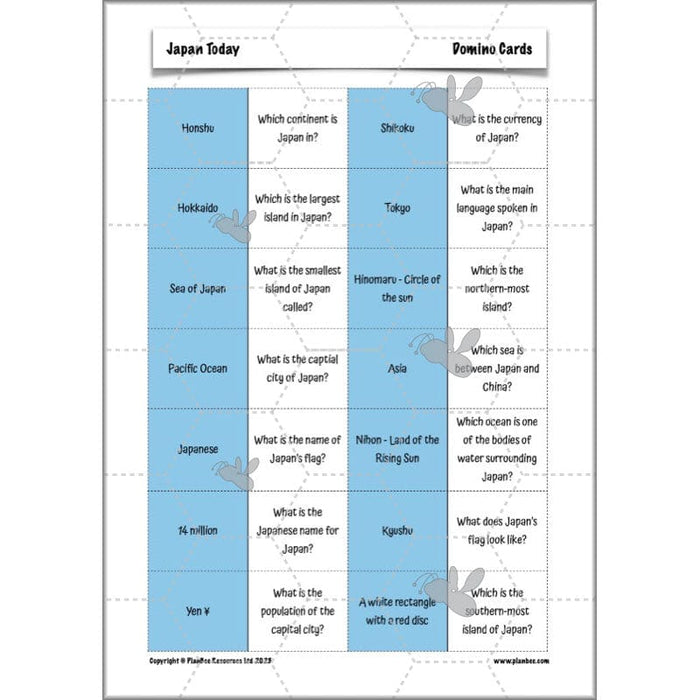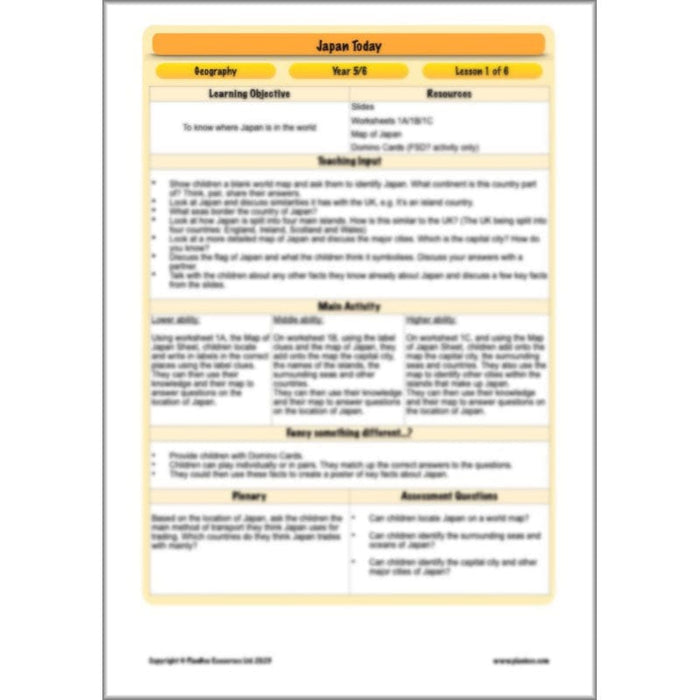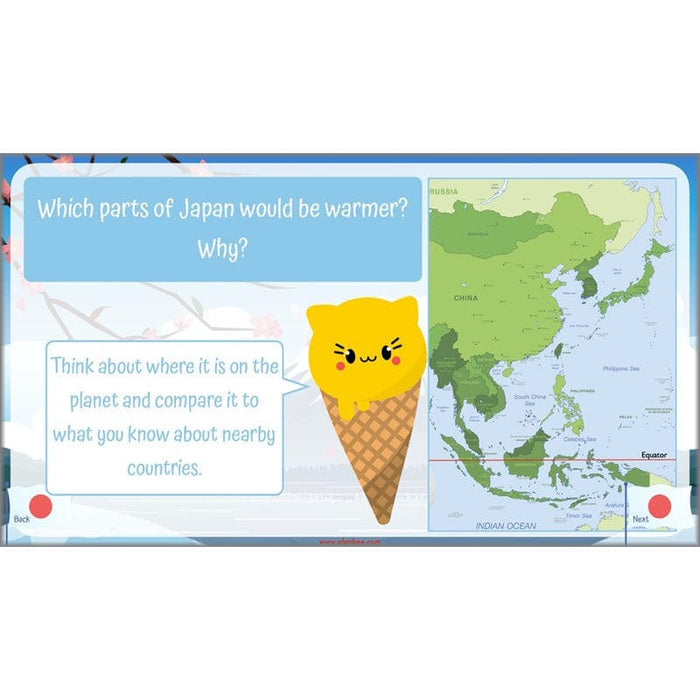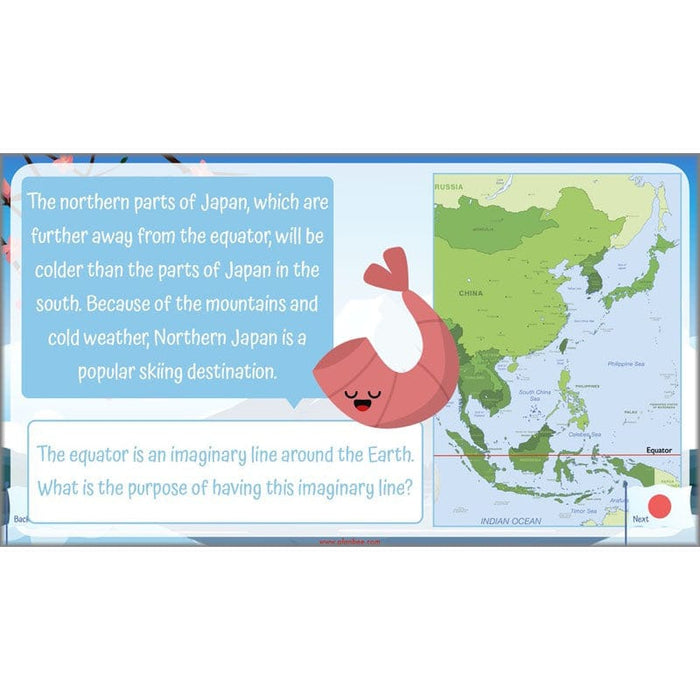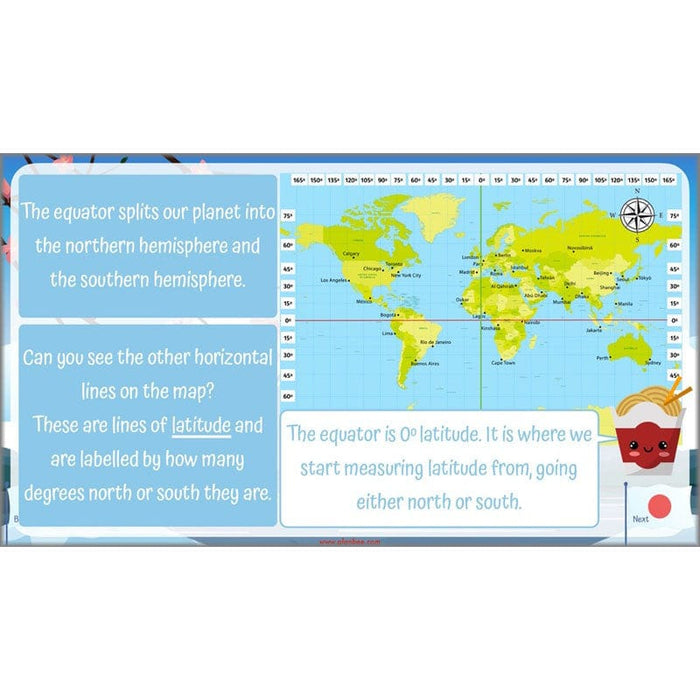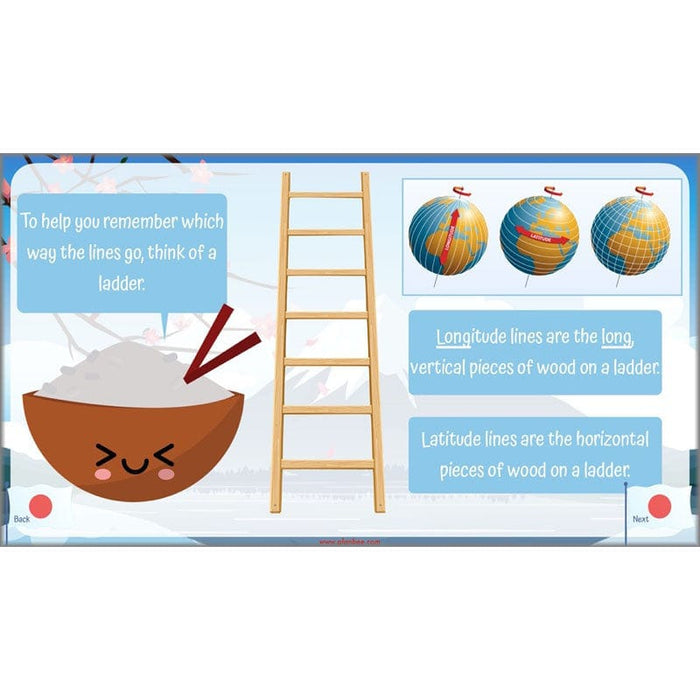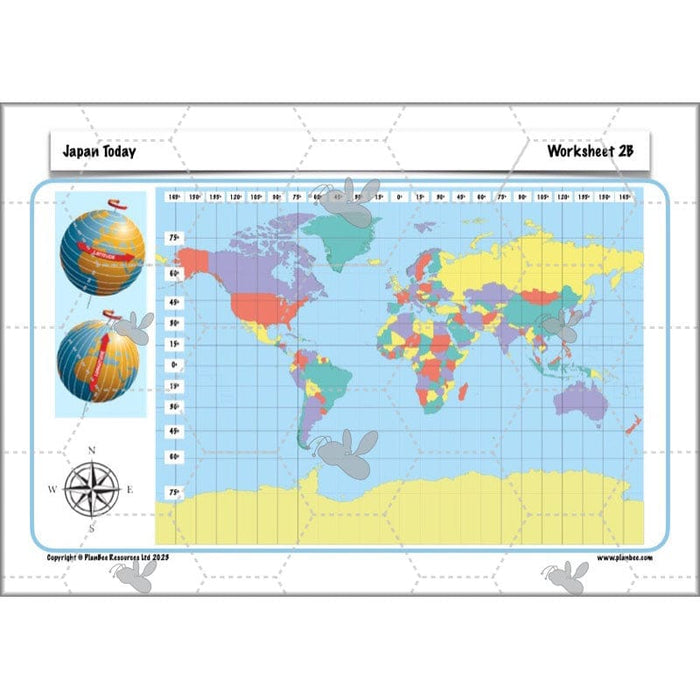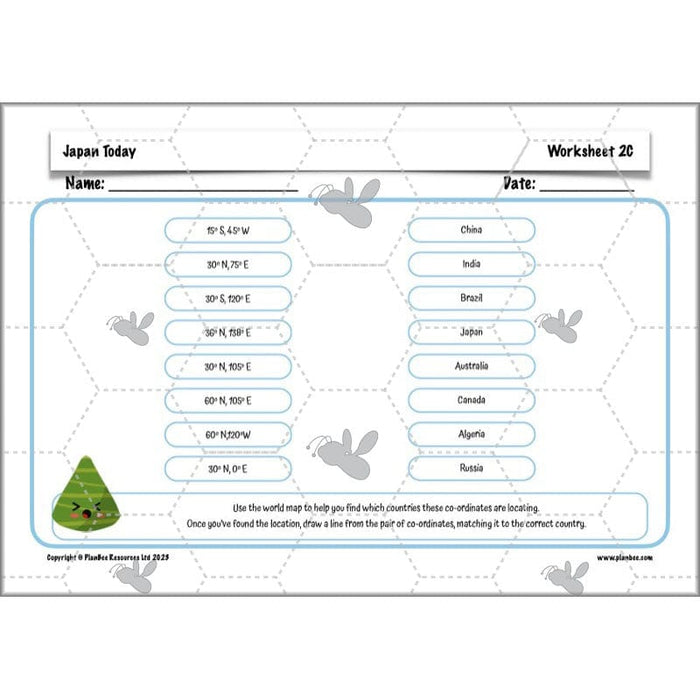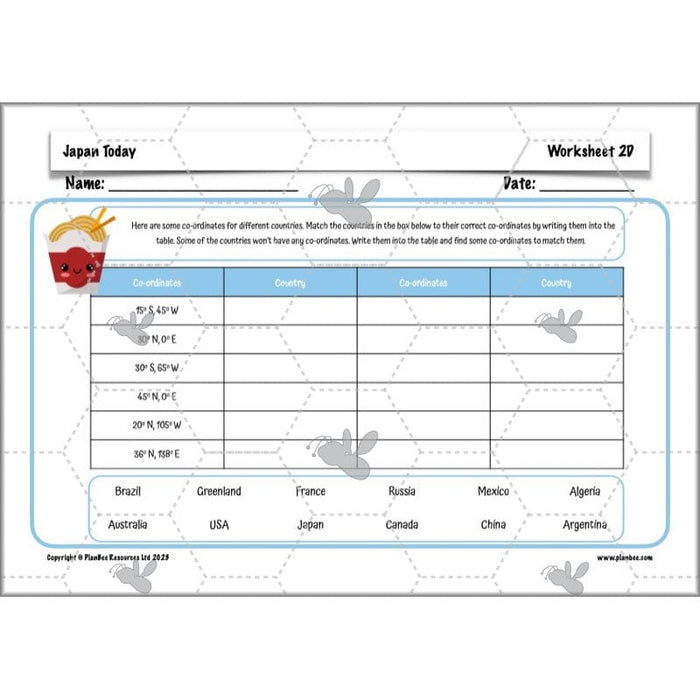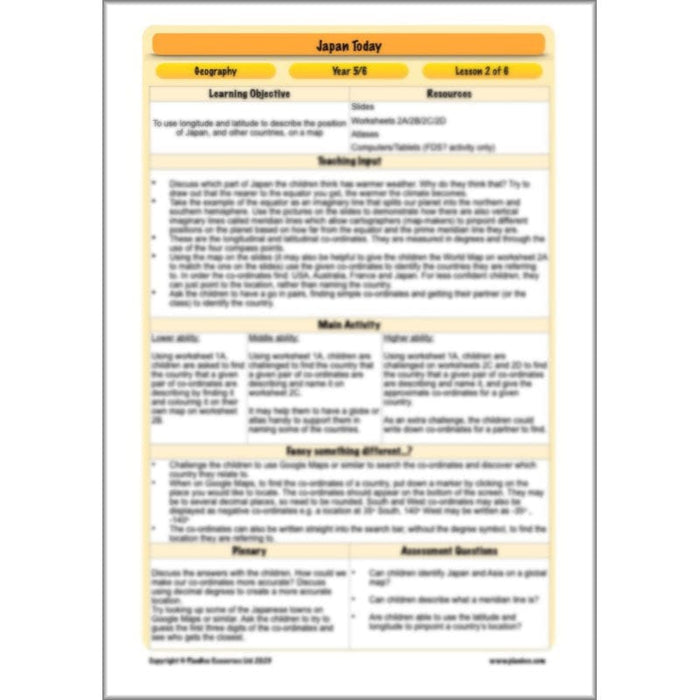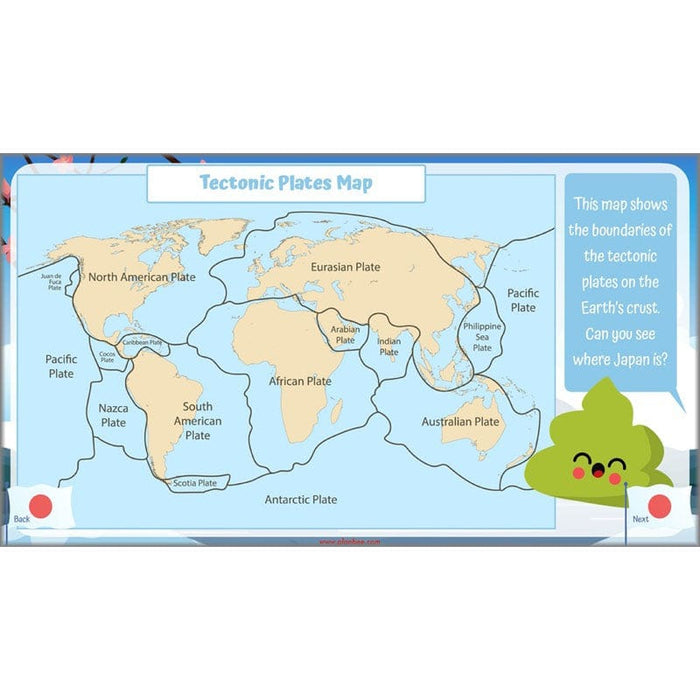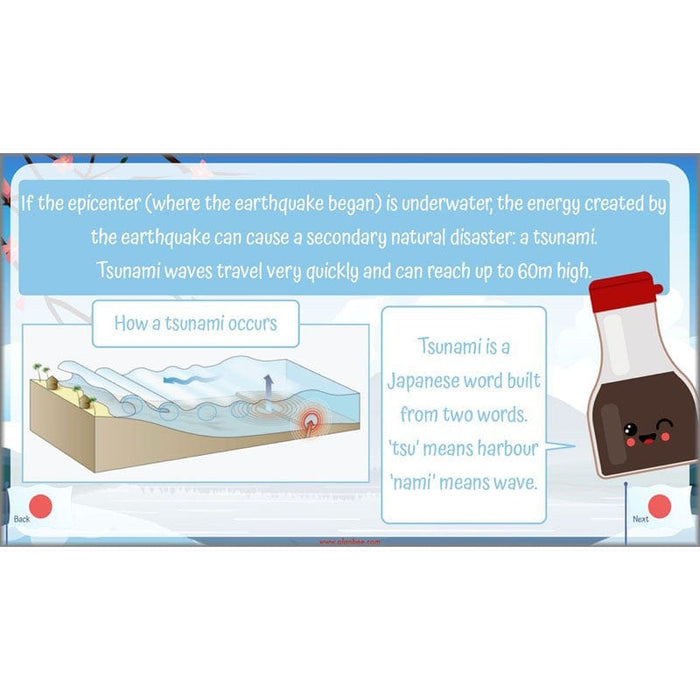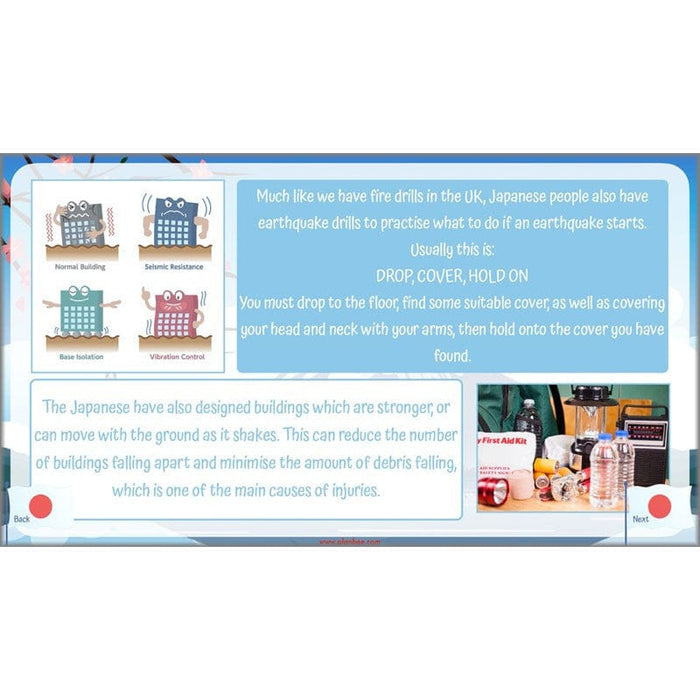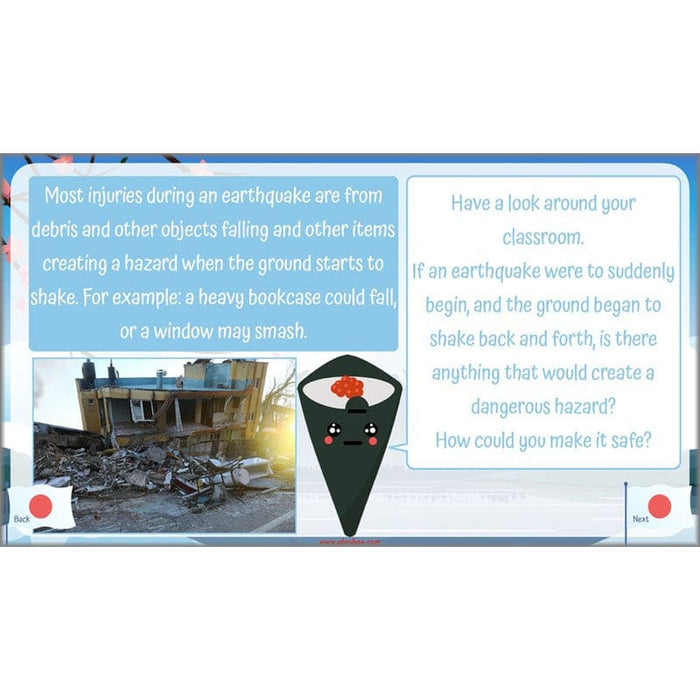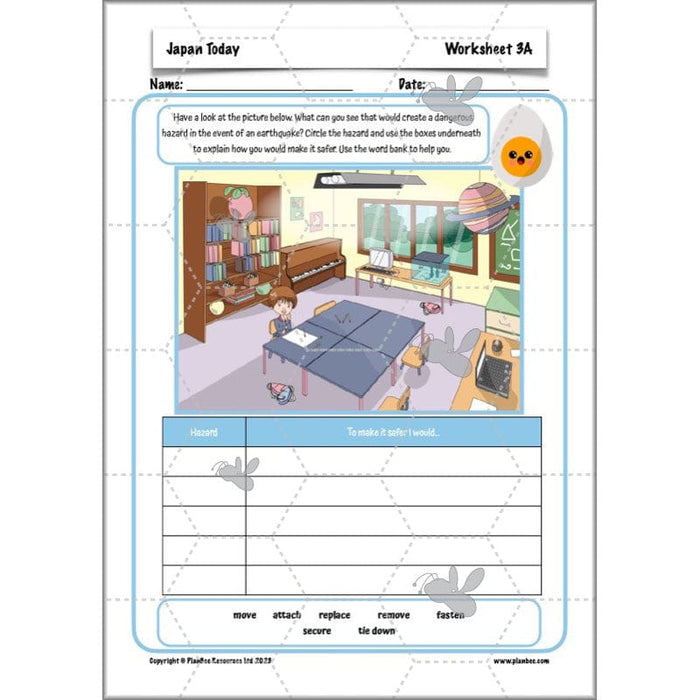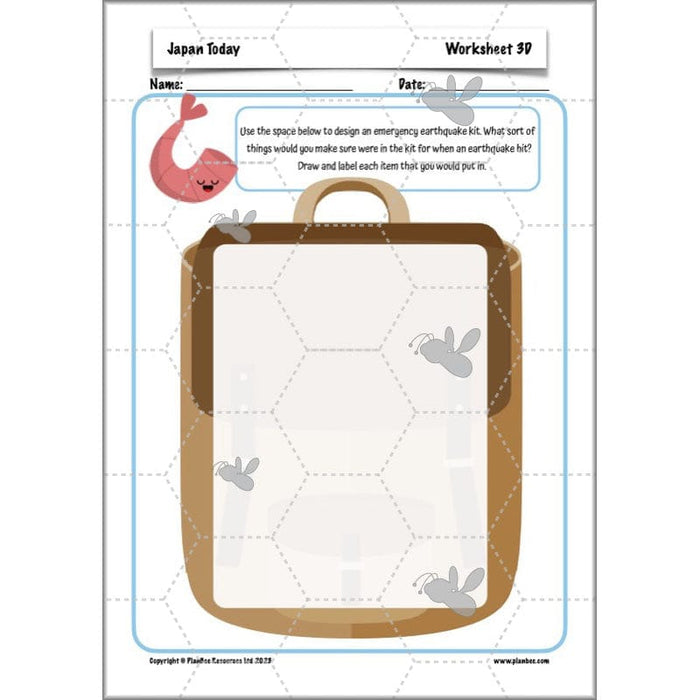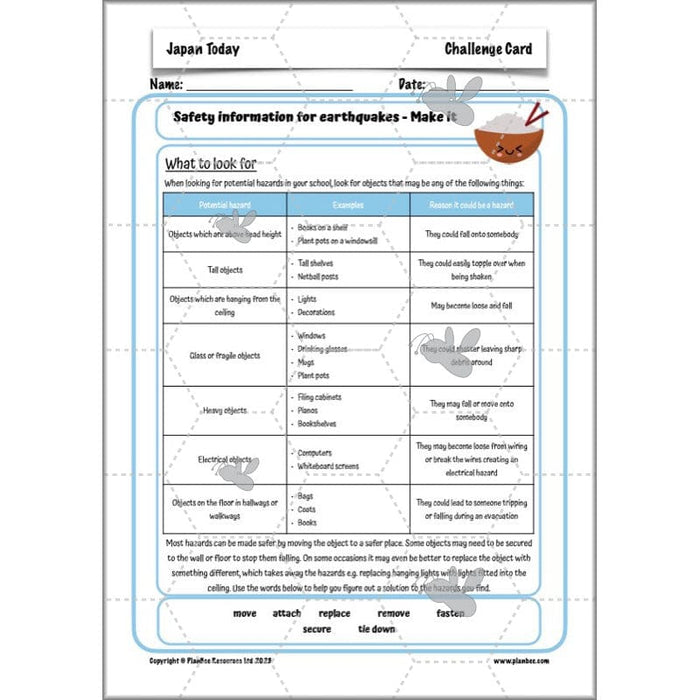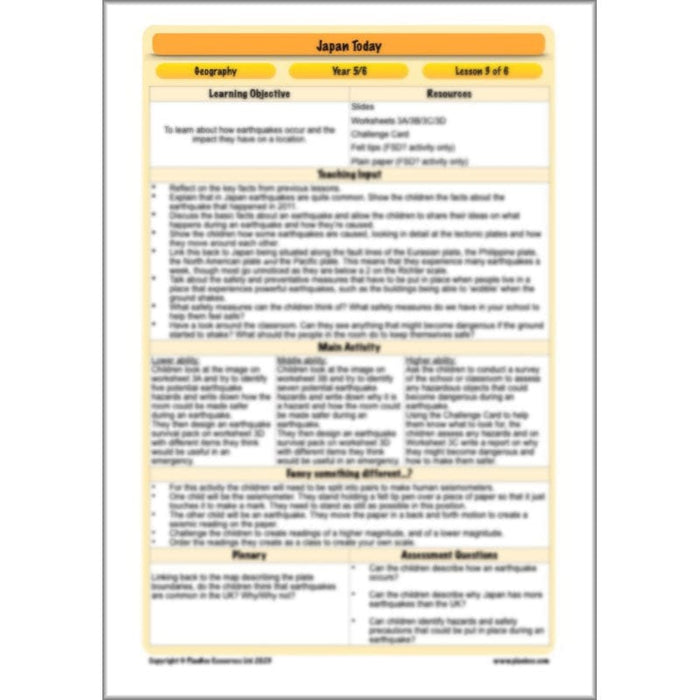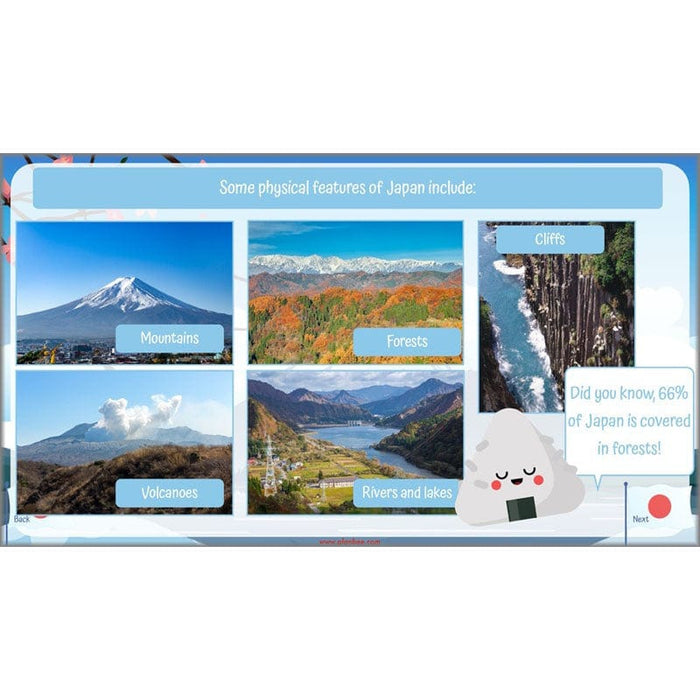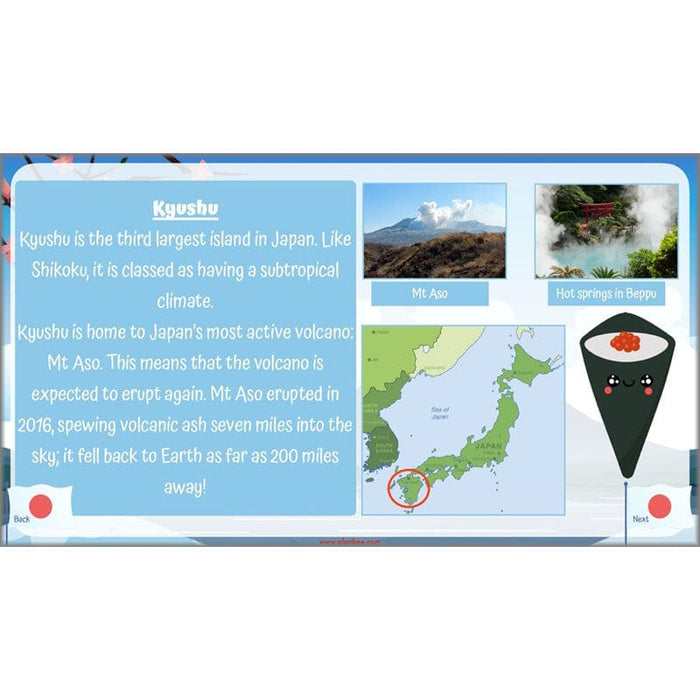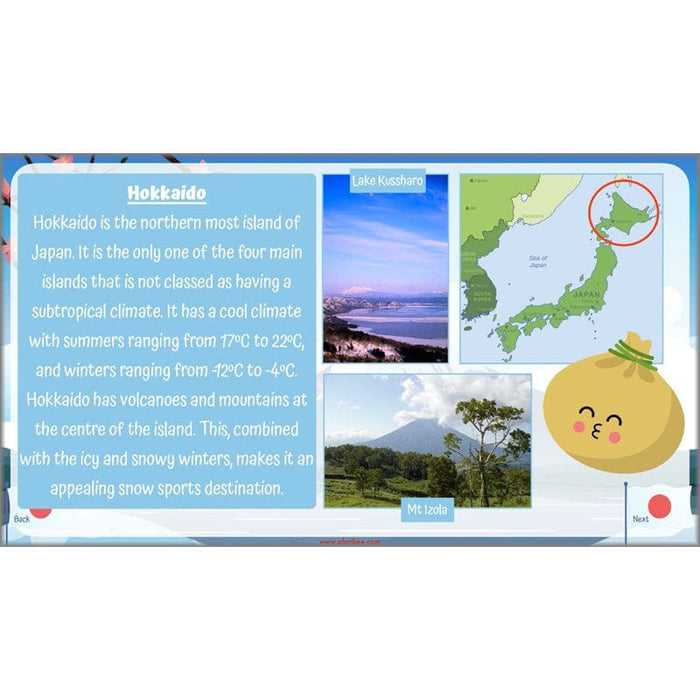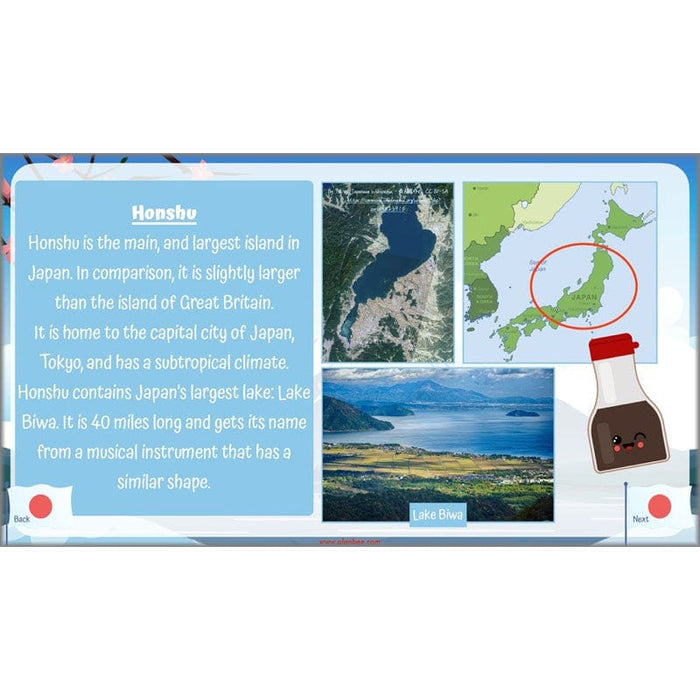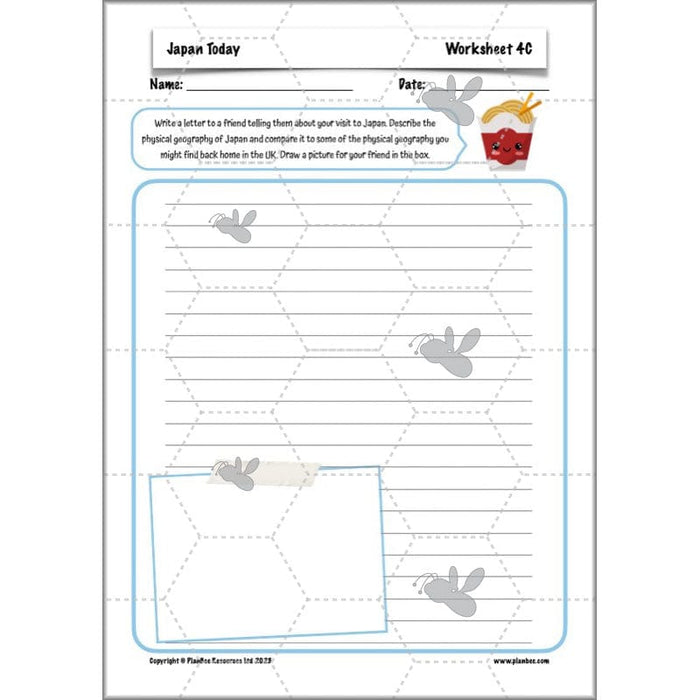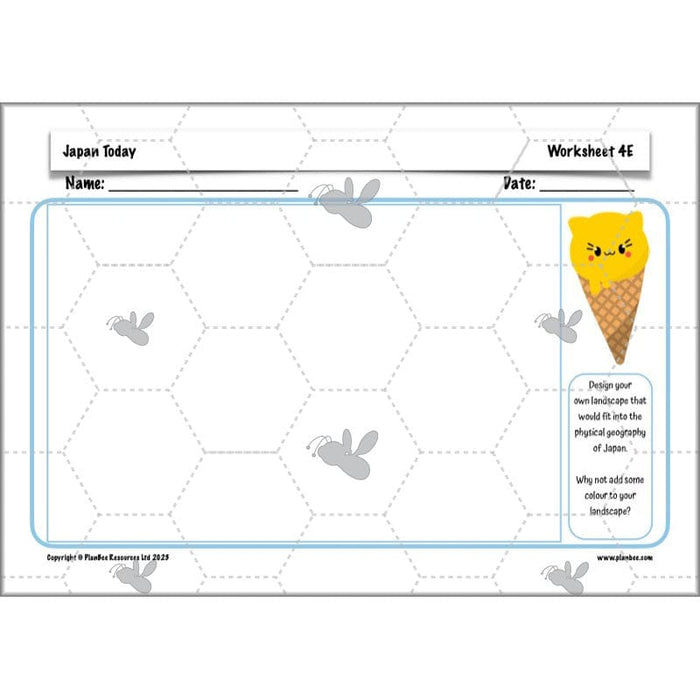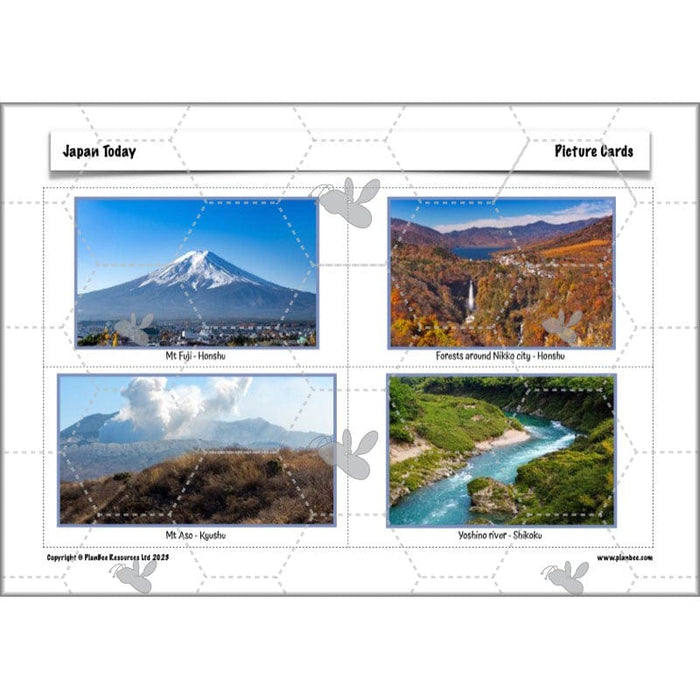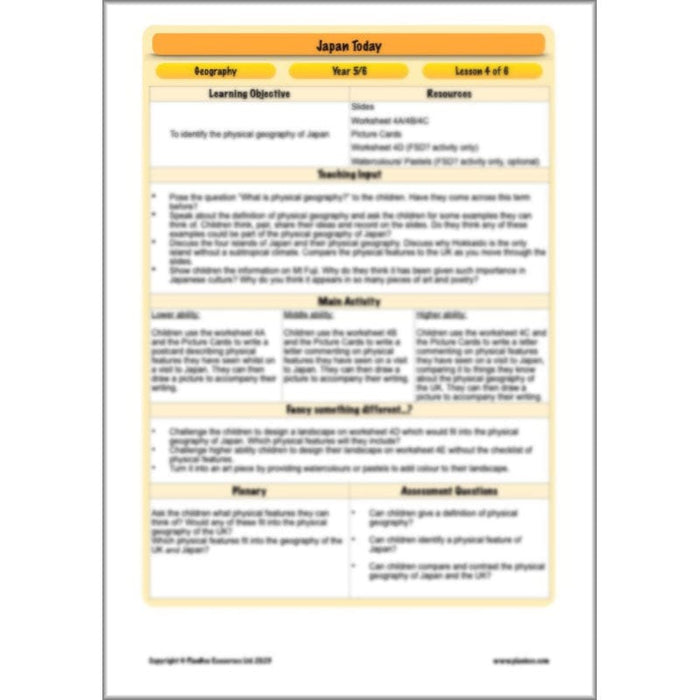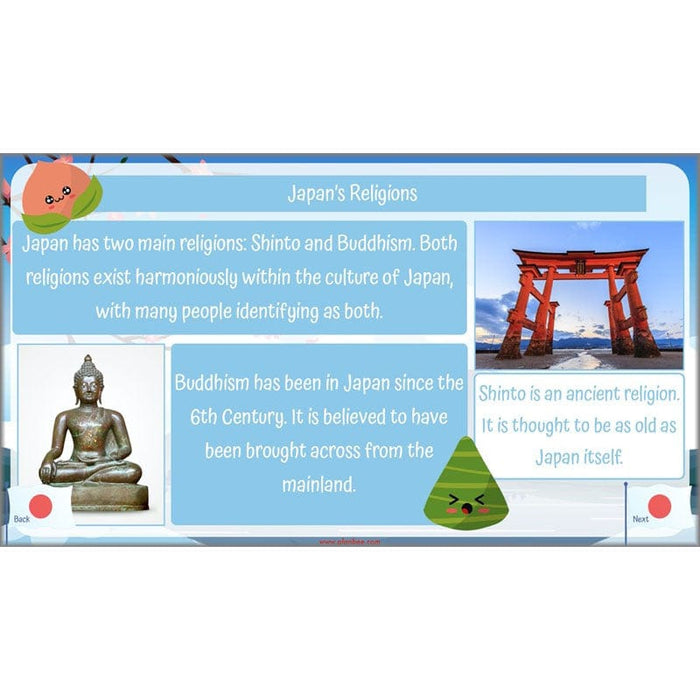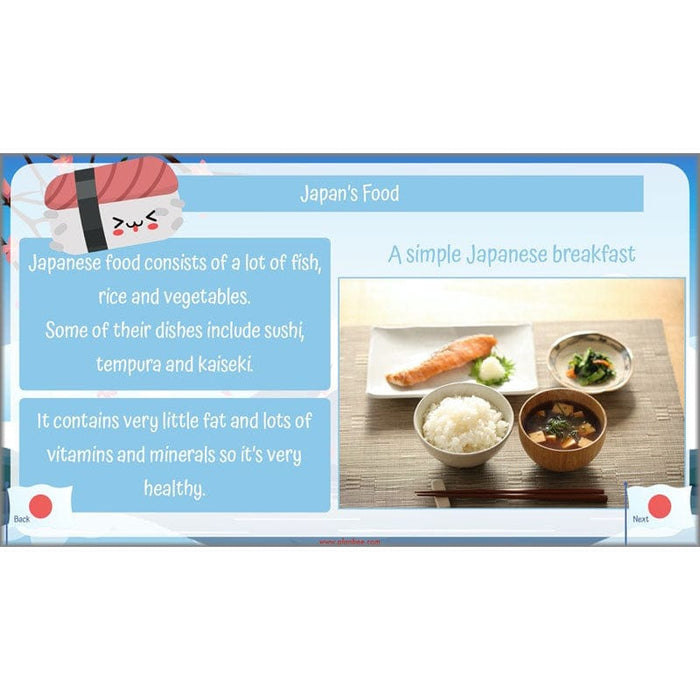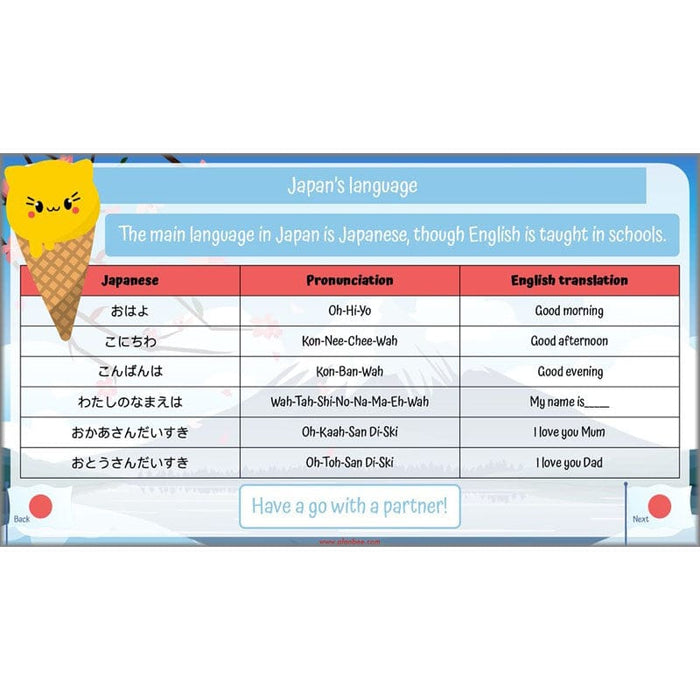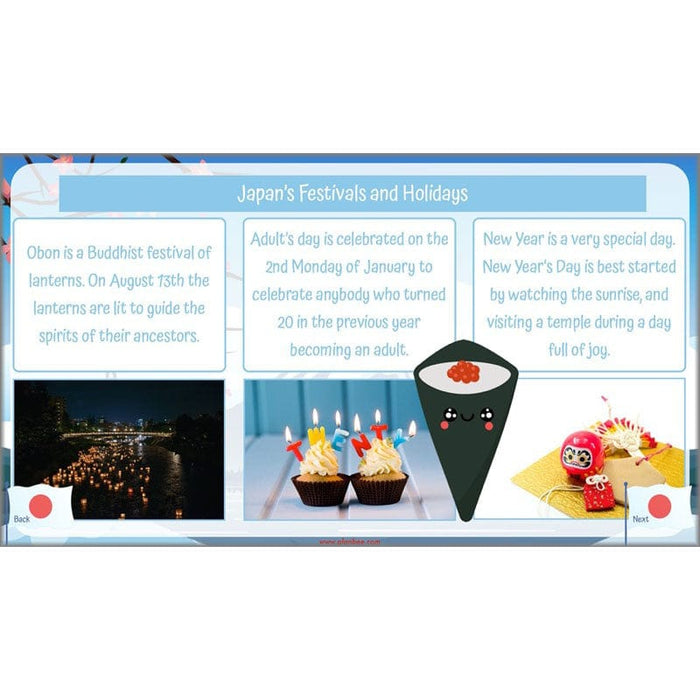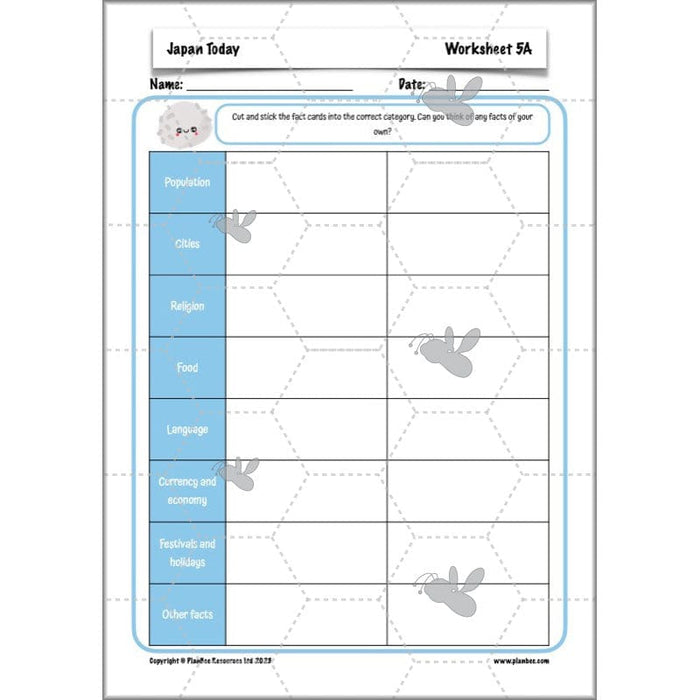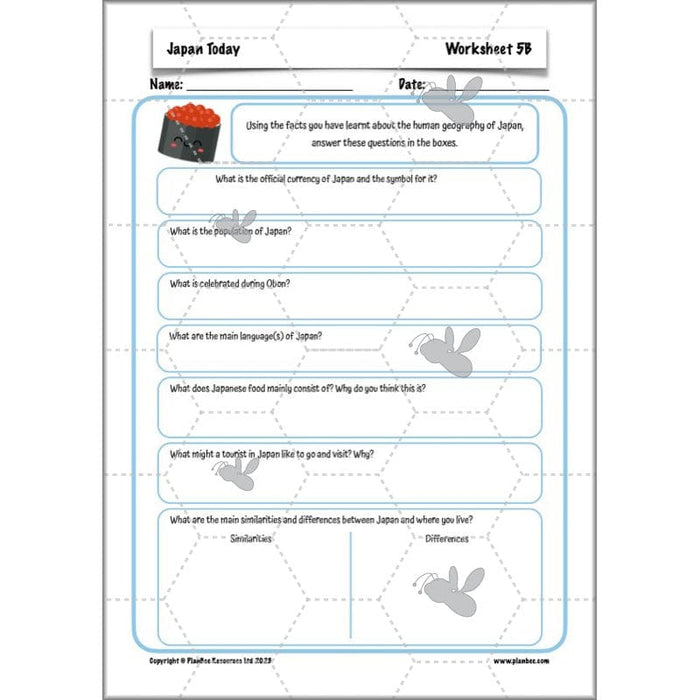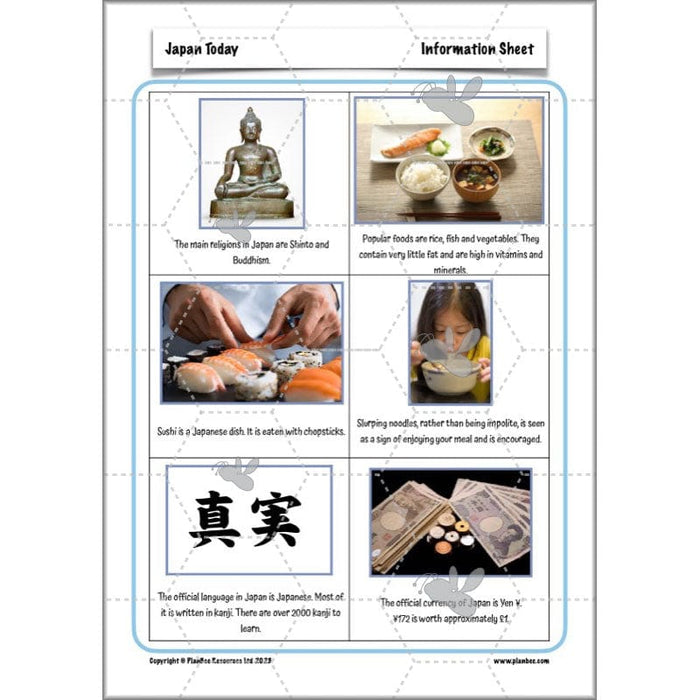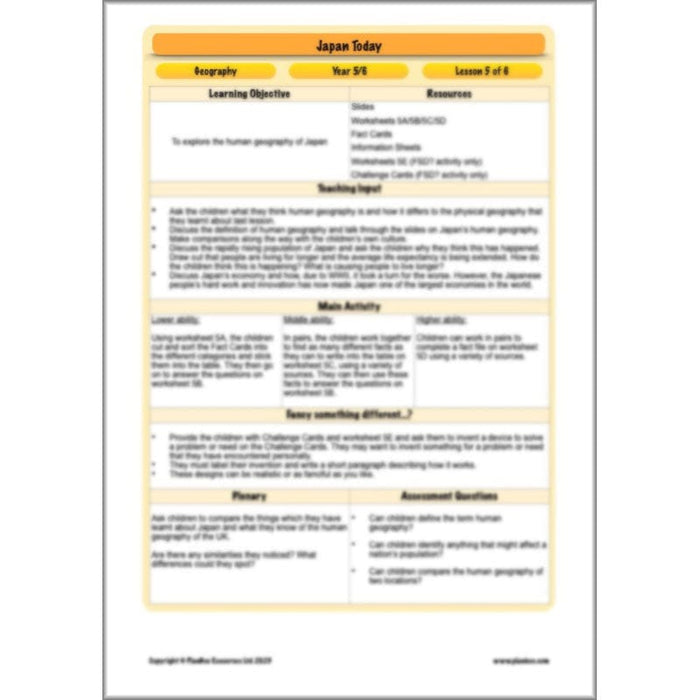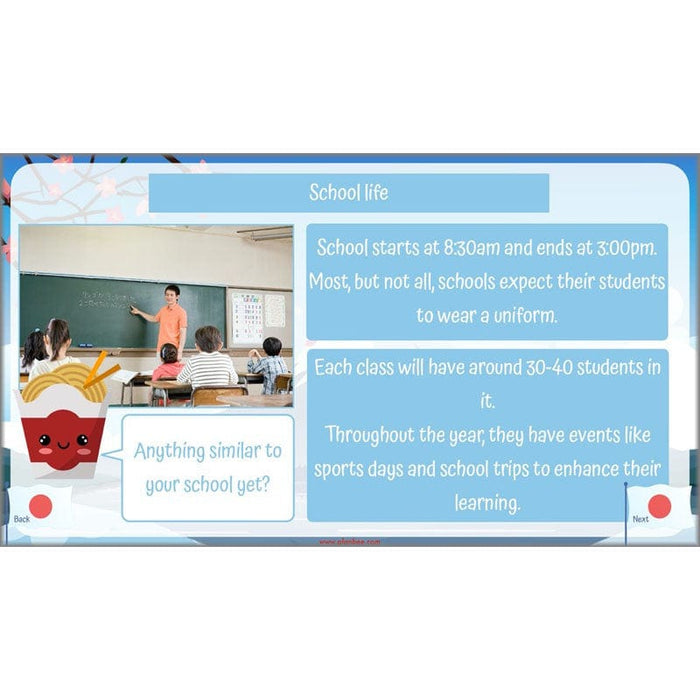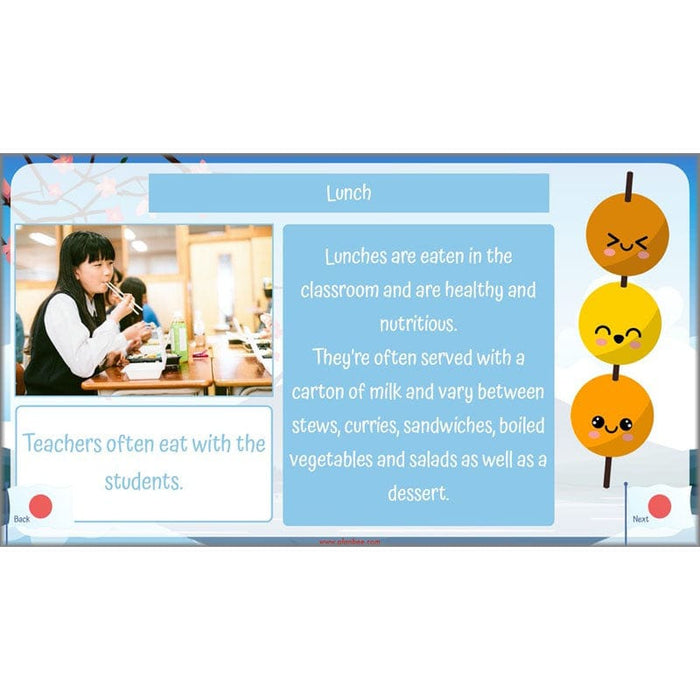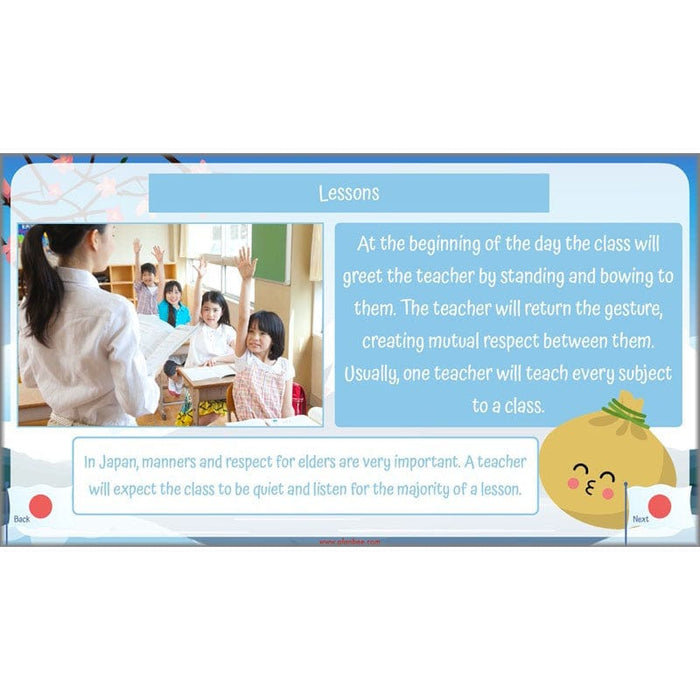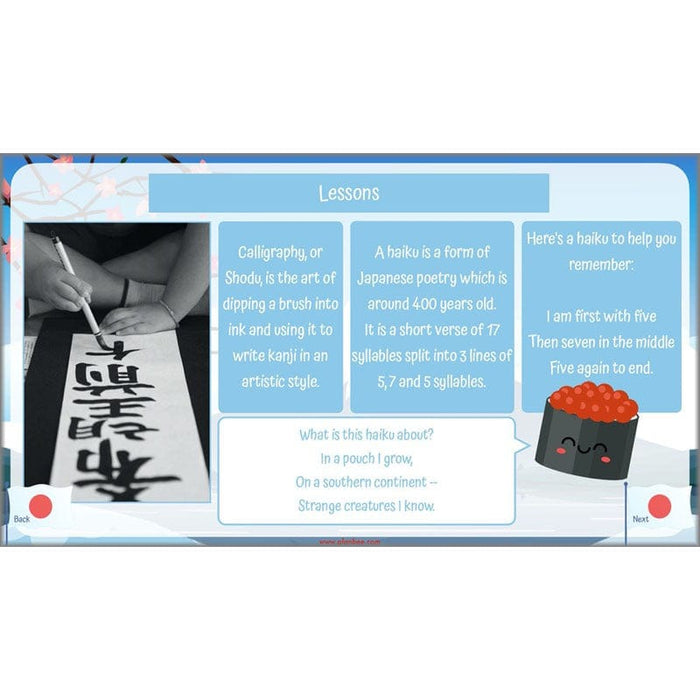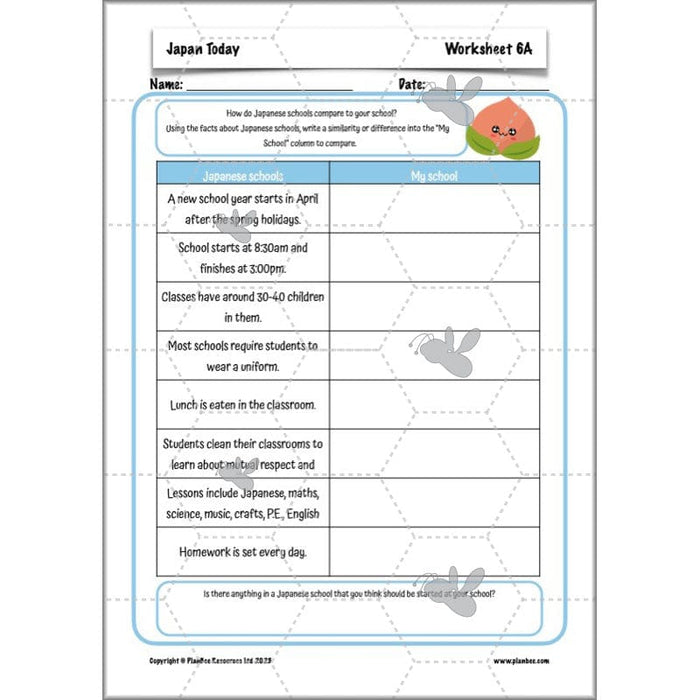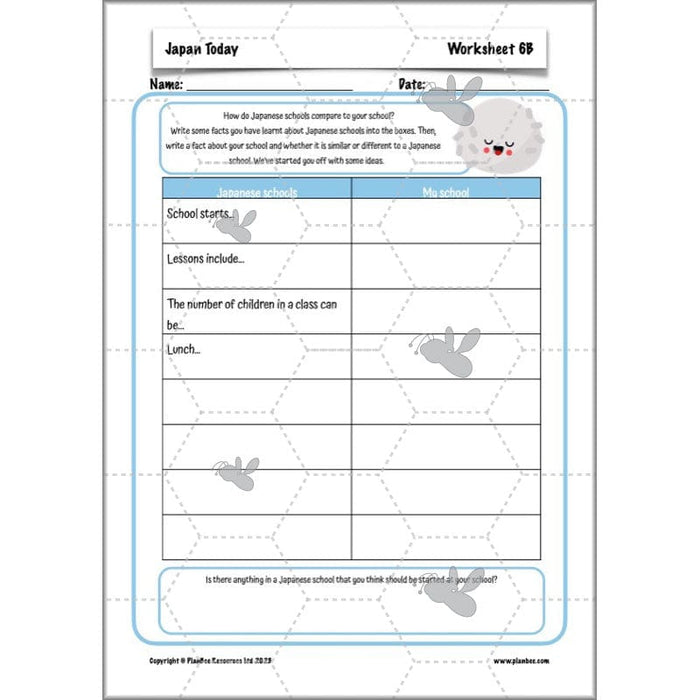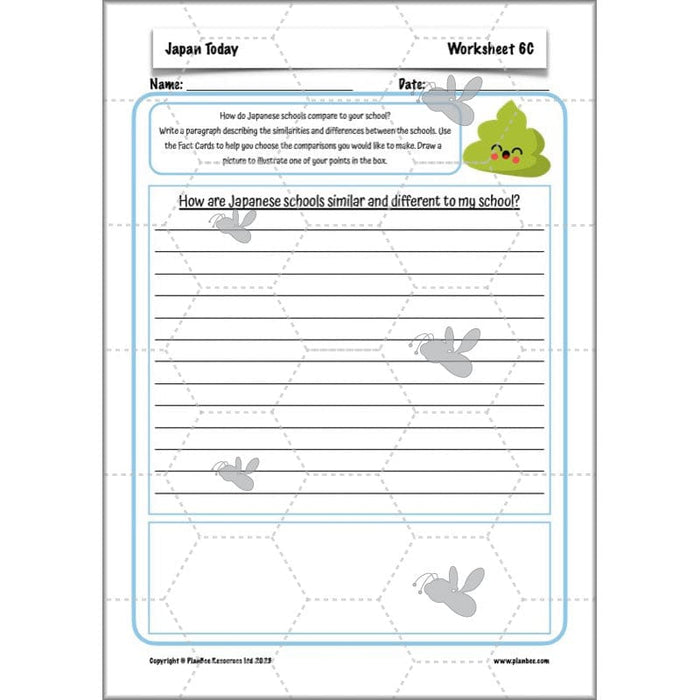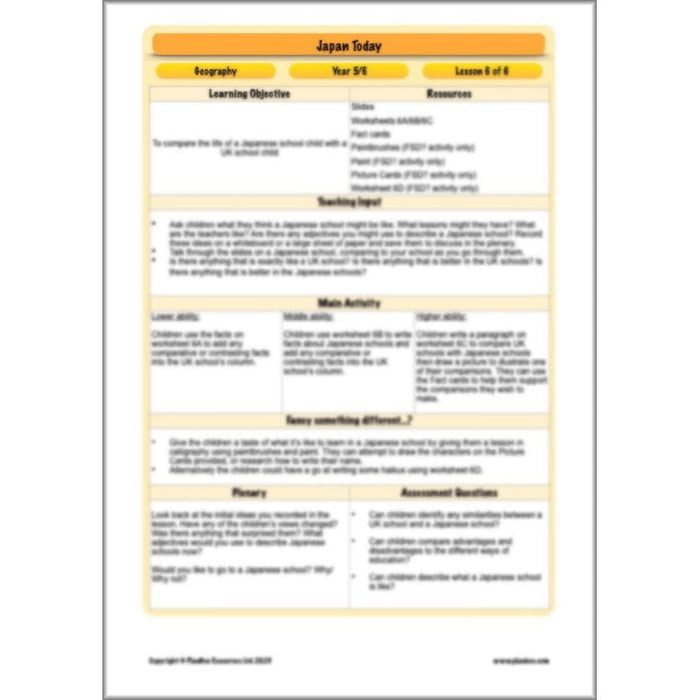#TheCompleteSeries6lessons
They begin by investigating the use of latitude and longitude when referring to a location and using this knowledge to identify Japan, and other countries’ positions around a world map. They then go on to explore the physical geography of earthquakes and the amazing features of Japan including mountains and volcanoes.
The children then focus on making comparisons of Japan’s culture and schools with their own culture and experiences.
#Lesson1WhereisJapan
Where in the world is Japan? Children begin by finding Japan on a world map. They then look in more detail at the country, and find out about the location of the surrounding countries, the seas and oceans and the islands that are part of Japan. Children record what they have learnt on their own maps of Japan, or use the facts they have learnt to play a dominoes game to test their memory.
What's included:
- Lesson plan
- Slides
- Activity ideas
- Differentiated worksheets
- Map of Japan
- Japan Domino cards
#Lesson2LatitudeandLongitude
Take an in-depth look at what the lines on a world map really mean! Investigate the uses of latitude and longitude as the children become cartographers, locating countries and using the co-ordinates to describe them. The children will discuss the importance of the equator and prime meridian line and how to get their co-ordinates accurate enough to pinpoint a smaller location.
What's included:
- Lesson plan
- Slides
- Activity ideas
- Differentiated worksheets
#Lesson3Earthquakes
Discover the reasons why Japan and many other countries are particularly susceptible to earthquakes and how they happen. Discuss the impact that a natural disaster has on a location and what can be done to help keep people safe. Then, allow the children to take on the role of safety officer for their classroom, highlighting objects that could become hazards in the event of an earthquake and discussing how they could be made safe.
What's included:
- Lesson plan
- Slides
- Activity ideas
- Differentiated worksheets
- Challenge cards
#Lesson4PhysicalGeography
Explore the beautiful physical geography of Japan and its climates. From towering mountains (which might also be active volcanoes) to hot springs and forests, the children discover what physical geography is and how a place’s location can change it. The children then go on to compare the physical geography of Japan to somewhere closer to home.
What's included:
- Lesson plan
- Slides
- Activity ideas
- Differentiated worksheets
- Picture cards
#Lesson5JapaneseCulture
Discover the rich and historical culture of Japan and its population. Learn about the events and changes that can affect a country’s population and economy and how these have changed over the last 150 years in Japan. Teach your class about the stunning cities and foods within the Japanese culture and even have a go at learning some Japanese phrases.
What's included:
- Lesson plan
- Slides
- Activity ideas
- Differentiated worksheets
- Fact cards
- Information sheets
- Challenge cards
#Lesson6SchoolLife
What is life like for a Japanese school student? Take your children on a journey through the day of a Japanese school and allow them to compare a way of life that they can relate to. Explore how a Japanese school is different, and how it is the same as your school and create discussions with the children on which positives they would like to have in their school.
What's included:
- Lesson plan
- Slides
- Activity ideas
- Differentiated worksheets
- Fact cards
- Picture Cards
Free Overview (Medium-Term Plan)
Download a free overview to support your teaching of this scheme of work.
Free Assessment Grid
Download a free, editable assessment grid to support your teaching of this scheme of work.
Curriculum Objectives covered
- KS2 - identify the position and significance of latitude, longitude, Equator, Northern Hemisphere, Southern Hemisphere, the Tropics of Cancer and Capricorn, Arctic and Antarctic Circle, the Prime/Greenwich Meridian and time zones (including day and night)
- KS2 - understand geographical similarities and differences through the study of human and physical geography of a region of the United Kingdom, a region in a European country, and a region within North or South America
- KS2 - describe and understand key aspects of physical geography, including: climate zones, biomes and vegetation belts, rivers, mountains, volcanoes and earthquakes, and the water cycle
- KS2 - use maps, atlases, globes and digital/computer mapping to locate countries and describe features studied
